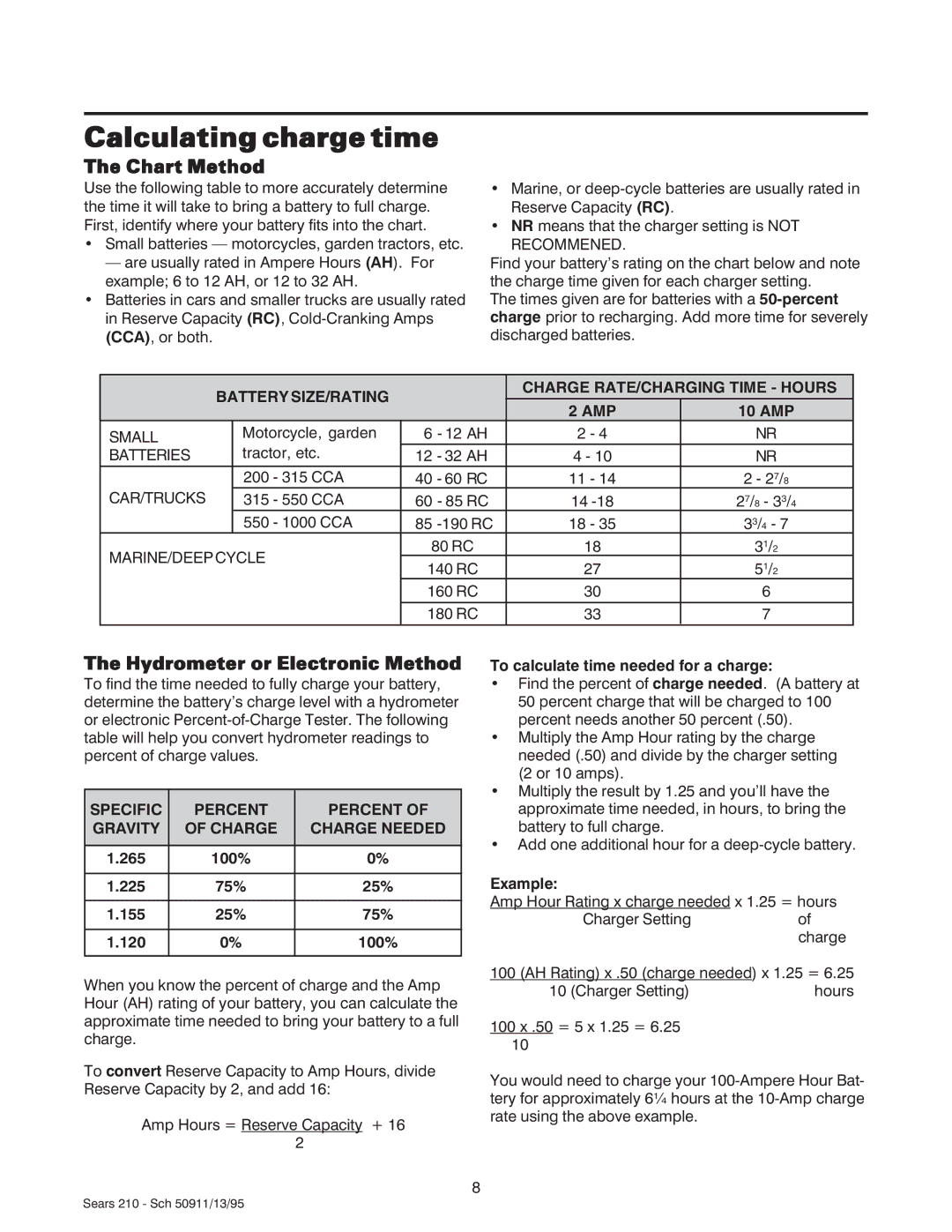200.71210 specifications
The Sears 200.71210 is a versatile and powerful tool designed for a variety of home and professional tasks, particularly in the realm of electrical and electronic repair. Its standout features and innovative technologies make it a preferred choice among DIY enthusiasts and professionals alike.One of the main characteristics of the Sears 200.71210 is its ergonomic design, which ensures user comfort during prolonged use. The tool is lightweight yet durable, allowing for easy handling while maintaining the necessary strength to perform demanding tasks. The grip is thoughtfully constructed to prevent slippage, which enhances precision and control when working in tight or awkward spaces.
Equipped with a robust digital display, the Sears 200.71210 provides users with clear and accurate readings, promoting efficiency and reducing the margin for error. This feature is particularly invaluable when measuring voltage, current, and resistance, as accurate readings can be the difference between a successful repair and prolonged troubleshooting.
The Sears 200.71210 also includes a range of advanced technologies designed to enhance its functionality. One of the most notable is its auto-ranging capability, which automatically adjusts measurement scales based on the detected values, saving users the hassle of manually selecting the correct range. This feature makes it suitable for both beginners and seasoned professionals, as it simplifies the measurement process.
Additionally, this tool boasts a variety of measurement functions. It can handle AC and DC voltage measurements, current measurements, resistance checks, and even continuity tests. This multifunctionality makes it an invaluable asset for a diverse array of projects, from household electrical repairs to more complex electronic diagnostics.
Safety is another critical aspect of the Sears 200.71210. It is designed with built-in protective features to prevent overloads, ensuring the longevity of the tool while safeguarding the user. The device typically incorporates a fuse that protects sensitive components from spikes in voltage, making it a reliable option in various working conditions.
In summary, the Sears 200.71210 stands out for its ergonomic design, advanced digital display, auto-ranging capabilities, multifunctionality, and safety features. Whether tackling home improvement projects or professional electrical work, the Sears 200.71210 provides the reliability and efficiency that users expect from a trusted brand.
